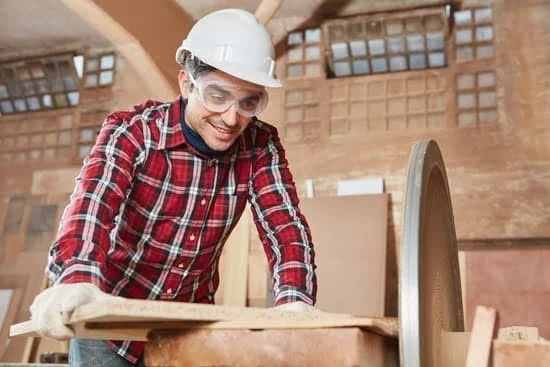Cyclone dust collectors play a crucial role in woodworking, effectively capturing and removing dust and debris from the air to create a cleaner and safer work environment. In order for these systems to operate at their best, measuring static pressure is essential. Static pressure is a key factor in determining the efficiency of a dust collection system, making it important to understand how to measure and interpret this metric.
Static pressure refers to the force exerted by air molecules within a confined space, such as within the ductwork of a dust collection system. This measurement provides valuable insight into the system’s performance and can help identify any inefficiencies or issues that may be hindering optimal operation. As such, it is essential for woodworkers to have a clear understanding of static pressure and how to accurately measure it in their cyclone dust collectors.
In this article, we will delve into the significance of static pressure in woodworking cyclone dust collectors, providing an overview of what static pressure is and why it matters for efficient dust collection.
Additionally, we will discuss the necessary equipment needed for measuring static pressure, preparing the dust collector for measurement, step-by-step instructions on how to measure static pressure accurately, interpreting the results, troubleshooting and adjusting static pressure issues, as well as maintenance and monitoring practices for long-term efficiency.
Stay tuned for valuable insights on optimizing your woodworking cyclone dust collector through effective static pressure measurement techniques.
Understanding Static Pressure
Static pressure is a critical factor in the effectiveness of woodworking cyclone dust collectors. It refers to the force that air exerts on the walls of the ductwork and internal components of the dust collection system as it moves through.
In the context of dust collection systems, static pressure plays a crucial role in determining how well the system can capture airborne particles and transport them to the collection container. Understanding static pressure is essential for ensuring that your cyclone dust collector operates at maximum efficiency.
Definition and Explanation
In simple terms, static pressure in a dust collection system is the resistance or force that acts against the flow of air within the ductwork. This resistance is caused by various factors such as duct size, length, bends, and obstructions within the system.
When measuring static pressure, woodworkers are essentially assessing how effectively air can move through the entire dust collection setup to ensure optimal suction at each point where waste material is generated. Essentially, it measures how well air can carry particles from their source to the cyclone dust collector.
Significance of Static Pressure
Measuring static pressure provides valuable insights into how efficiently your woodworking cyclone dust collector is operating. It allows you to identify any potential issues within the system that may be hindering its performance. By understanding and monitoring static pressure, woodworkers can make informed decisions about necessary adjustments or maintenance to optimize their dust collection setup’s performance.
For those unfamiliar with how to measure static pressure in woodworking cyclone dust collector, it’s essential to first grasp its fundamental aspects before considering measurement tools and techniques.
Equipment Needed for Measuring Static Pressure
When it comes to measuring static pressure in a woodworking cyclone dust collector, having the right tools and equipment is essential for obtaining accurate results. Here is a list of the necessary equipment for measuring static pressure:
- Manometer: A manometer is a device used to measure the pressure of a fluid, in this case, air. It is crucial to use a manometer that is specifically designed for measuring low differential pressures, as those typically found in dust collection systems.
- Pitot Tube: A pitot tube is used to measure fluid flow velocity. It can be inserted into the ductwork of the dust collection system to determine the velocity pressure, which is then used to calculate the static pressure.
- Anemometer: An anemometer measures airflow velocity. This instrument can be helpful in determining the overall airflow within the dust collection system, which has an impact on static pressure.
- Personal Protective Equipment (PPE): Before conducting any measurements on the dust collector, it’s important to wear appropriate PPE such as gloves, goggles, and a respirator to ensure safety.
Using accurate and reliable measurement tools is crucial for obtaining precise static pressure readings in a woodworking cyclone dust collector. Inaccurate measurements could lead to inefficiencies in the dust collection system and compromise its performance. By using the right equipment and following proper procedures, woodworkers can ensure that their cyclone dust collectors are operating at optimal efficiency.
Preparing the Dust Collector for Measurement
Before measuring the static pressure in your woodworking cyclone dust collector, it is essential to properly prepare the equipment to ensure accurate and reliable results. Here are the steps to follow in order to prepare the dust collector for measurement:
1. Turn Off the Dust Collector: Before doing anything else, make sure to turn off the cyclone dust collector and unplug it from the power source. This is a crucial safety measure to prevent any accidents while prepping the equipment.
2. Clear the Collection Drum: Remove any collected debris or sawdust from the collection drum of the dust collector. This will help ensure that airflow is not obstructed during the measurement process.
3. Check and Clean Filters: Inspect the filters in your cyclone dust collector and clean or replace them if necessary. Clogged or dirty filters can affect static pressure readings, so it’s important to ensure they are clean before proceeding with measurements.
4. Seal Any Leaks: Inspect all connections, hoses, and seals in your dust collection system for any leaks or loose fittings. Be sure to seal or tighten any areas where air may be escaping, as this can impact static pressure measurements.
5. Ensure Proper Airflow: Check that there are no obstructions in the ductwork and that all blast gates are open for unrestricted airflow throughout the system.
By following these steps, you can effectively prepare your woodworking cyclone dust collector for static pressure measurement, ensuring accurate and reliable results that will help optimize its performance in dust collection efficiency.
Step-by-Step Guide on Measuring Static Pressure
Measuring static pressure in a woodworking cyclone dust collector is essential for ensuring efficient dust collection and optimal performance of the system. This step-by-step guide will provide detailed instructions on how to measure static pressure accurately and effectively.
Gather the Necessary Equipment
Before measuring static pressure in your cyclone dust collector, it is important to gather the necessary equipment. You will need a manometer, also known as a water column gauge, which is used to measure the pressure difference in the system. Additionally, you may need hoses or adapters to connect the manometer to the dust collector for measurement.
Identify the Measurement Point
Once you have the equipment ready, identify the measurement point on your cyclone dust collector where you will be taking the static pressure readings. This is typically located on the side or top of the dust collector near the inlet or outlet. Make sure that the area around the measurement point is clean and free from any obstructions that could affect the accuracy of the measurement.
Take Static Pressure Readings
With your manometer connected to the measurement point, turn on your woodworking cyclone dust collector and let it run for a few minutes to stabilize airflow. Once stable, take multiple readings at different points and heights within the ductwork to ensure accuracy. Record all measurements and calculate an average static pressure reading for your system.
By following these steps carefully, you can accurately measure static pressure in your woodworking cyclone dust collector and ensure that it is operating at optimal efficiency.
Interpreting the Results
Once you have successfully measured the static pressure in your woodworking cyclone dust collector, it is important to understand and interpret the results. The static pressure measurement provides valuable information about the efficiency and performance of your dust collection system.
The measured static pressure indicates the resistance that the dust collector fan is working against as it pulls air through the system. A higher static pressure reading typically signifies a greater level of resistance, which can be caused by factors such as clogged filters, restricted airflow, or improper ductwork. On the other hand, a lower static pressure reading may indicate that the system is operating with less resistance and could suggest potential leaks or inefficiencies.
By understanding these readings, woodworkers can make informed decisions about necessary adjustments or maintenance to optimize the performance of their cyclone dust collector. Regular monitoring of static pressure can also help identify issues before they lead to more significant problems within the dust collection system.
It’s important to note that while a single static pressure measurement provides valuable information, it is beneficial to monitor these measurements over time to establish trends and patterns in the performance of the woodworking cyclone dust collector. This ongoing monitoring allows for proactive maintenance and adjustments, ultimately leading to improved efficiency and air quality within the woodworking shop.
| Measured Value | Interpretation |
|---|---|
| Higher Static Pressure | Potential clogged filters or restricted airflow |
| Lower Static Pressure | Possible leaks or inefficiencies in system |
Troubleshooting and Adjusting Static Pressure
Cyclone dust collectors are essential in woodworking shops for maintaining a clean and safe working environment. However, to ensure their efficient operation, it is crucial to measure and adjust the static pressure regularly. In this section, we will discuss common issues related to static pressure in cyclone dust collectors and provide tips for troubleshooting and making necessary adjustments to optimize static pressure.
One common issue with static pressure in woodworking cyclone dust collectors is a decrease in airflow caused by clogging or blockages in the system. When the airflow is restricted, it can lead to a build-up of sawdust and other particles, reducing the collector’s efficiency. To troubleshoot this issue, it is important to inspect the ductwork, filter bags, and the overall system for any blockages or clogs. Clearing out these obstructions can help restore optimal airflow and static pressure.
Another issue that may arise is an imbalance between the air intake and exhaust in the dust collector system. This imbalance can lead to fluctuations in static pressure, affecting the performance of the collector. To address this issue, it is essential to check for any leaks or gaps in the ductwork and sealing them properly. Additionally, adjusting the size of the intake and exhaust openings can help achieve a better balance between airflow and optimize static pressure.
Regular maintenance of the cyclone dust collector is key to preventing static pressure issues. Cleaning or replacing filter bags, checking for leaks, and ensuring proper ventilation are essential maintenance tasks that can help maintain optimal static pressure levels. By addressing these common issues through troubleshooting and making necessary adjustments, woodworkers can ensure that their cyclone dust collectors operate at peak efficiency.
| Common Issues | Troubleshooting Tips |
|---|---|
| Decrease in airflow due to clogging or blockages | Inspect ductwork and filter bags for blockages; clear out any obstructions. |
| Imbalance between air intake and exhaust | Check for leaks or gaps in ductwork; adjust intake and exhaust openings for better balance. |
| Lack of regular maintenance | Clean or replace filter bags; check for leaks; ensure proper ventilation. |
Maintenance and Monitoring
Regular maintenance and monitoring of static pressure in woodworking cyclone dust collectors is essential for ensuring optimal performance and efficiency. By regularly measuring static pressure, woodworkers can identify any issues with their dust collection system and make necessary adjustments to maintain efficient operation.
To measure static pressure in a cyclone dust collector, you will need a manometer or a digital pressure gauge, as well as a drill and a hole saw. The manometer or pressure gauge is used to measure the static pressure within the dust collector, while the drill and hole saw are used to create an access port for taking the measurements.
Before measuring static pressure, it is important to prepare the dust collector by turning it off and allowing it to depressurize. This ensures that the measurements taken are accurate and reflective of the actual operating condition of the system. Additionally, it is important to follow all safety precautions when working on the dust collector, including wearing appropriate protective gear and turning off power sources.
Once the dust collector has been properly prepped, you can proceed with measuring the static pressure using the manometer or digital pressure gauge. Take multiple measurements at different points within the system to ensure accuracy, and record the results for future reference. By consistently monitoring static pressure in your woodworking cyclone dust collector, you can proactively address any issues that may arise and maintain efficient dust collection for your woodworking shop.
Conclusion
In conclusion, understanding and measuring static pressure in woodworking cyclone dust collectors is essential for maintaining optimal efficiency in dust collection systems. By accurately measuring static pressure, woodworkers can ensure that their cyclone dust collectors are operating at peak performance, effectively capturing and containing fine particulate matter.
The importance of using accurate and reliable measurement tools cannot be overstated when it comes to assessing static pressure in a cyclone dust collector. From manometers to pitot tubes, having the right equipment is crucial for obtaining precise measurements. Additionally, properly preparing the dust collector and following a step-by-step guide for measuring static pressure are essential for accurate results.
Regular maintenance and monitoring of static pressure should also be emphasized as part of a woodworker’s best practices. By keeping a close eye on these measurements, potential issues can be identified and addressed promptly, ensuring the ongoing efficiency of the cyclone dust collector. Ultimately, by incorporating these measurement techniques into their woodworking routine, individuals can make sure that their dust collection systems are functioning optimally for years to come.

Hi everyone! I’m a woodworker and blogger, and this is my woodworking blog. In my blog, I share tips and tricks for woodworkers of all skill levels, as well as project ideas that you can try yourself.





